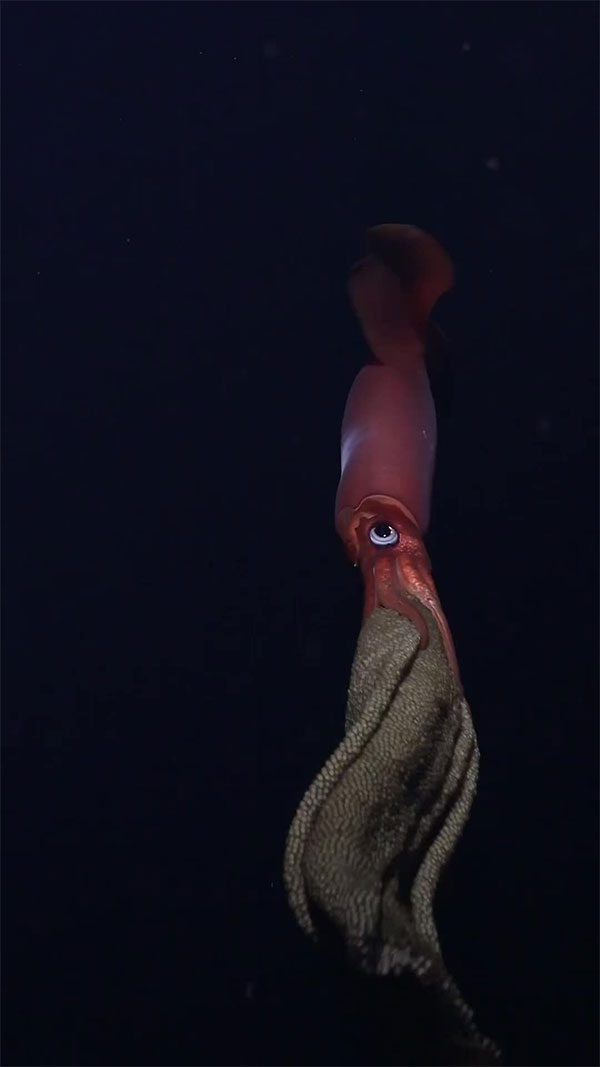The Schmidt Ocean Institute Shares Rare Footage of Blackfin Squid Carrying a Massive Egg Mass Like a Long Dress Underwater.
The blackfin squid is nurturing a large egg mass. (Video: Schmidt Ocean Institute)
Researchers have discovered the blackfin squid (Gonatus onyx), one of the few squid species known to incubate eggs, during an expedition off the coast of Costa Rica, Live Science reported on January 4.
“The large egg mass is attached to hooks on the squid’s arms. For several months while carrying the egg mass, they will not eat anything,” a representative from the Schmidt Ocean Institute, which organized the expedition, explained while sharing the footage of the blackfin squid on social media. The striking video shows the squid towing the egg mass like a long dress and gracefully flapping its fins to swim through the water.
Marine biologists previously believed that blackfin squid and other squid species laid eggs in clusters on the ocean floor, allowing them to develop and hatch independently. However, in 2001, Brad Seibel, a postdoctoral researcher at the Monterey Bay Aquarium Research Institute (MBARI), debunked this notion. Seibel observed a blackfin squid incubating an egg pouch in the Monterey Canyon, off the coast of California, through the lens of a remotely operated vehicle.

The large egg mass attached to hooks on the squid’s arms.
In a 2005 study, Seibel and colleagues described the egg-incubation behavior of female blackfin squid. They can carry up to 3,000 eggs and move through well-oxygenated waters until the young hatch and swim away. The squid use their arms to pump water over the egg mass, providing oxygen to the eggs.
The blackfin squid is among the most abundant cephalopods in the Pacific and Atlantic Oceans. In the North Pacific, this species is typically found at depths over 1,900 meters. They possess neutral buoyancy, meaning they do not need to exert effort to float or swim, but the egg-carrying squid cannot swim quickly and may easily become prey for deep-diving marine mammals.





















































